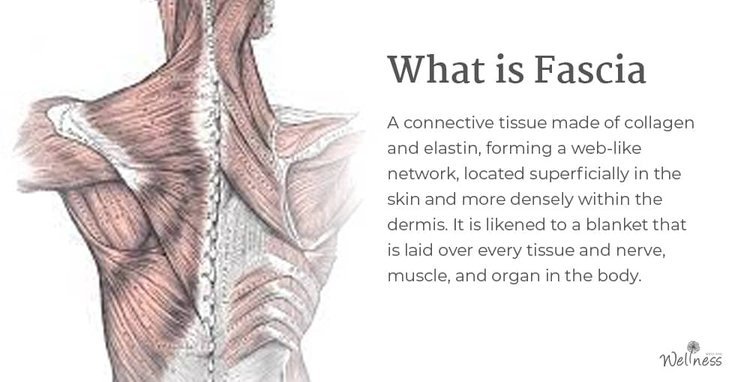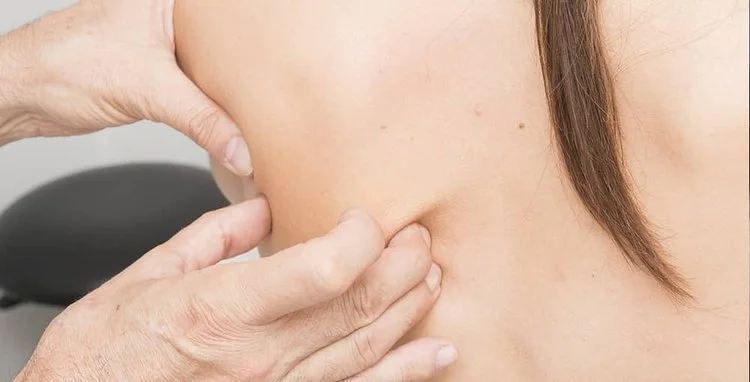How to Relieve Chronic Pain With Myofascial Release Therapy
If you're scanning for a safe, natural way to reduce pain, Myofascial Release therapy may be the perfect solution. This type of physical therapy uses a combination of massage and stretching to help reduce tension and restore length to tight and strained muscles.
This can address severe pain, improve mobility, and even treat headaches and other uncomfortable symptoms. This blog post will discuss how it can help reduce pain and improve your overall quality of life.
What Is Fascia?
It is a type of tissue located throughout the body. It covers, supports and separates muscles and other organs. It has a wide range of functions, including providing structural support, stabilizing organs, and helping muscles and other tissues to move and slide against each other.
It is made up of collagen fibres and elastin fibres that form a three-dimensional web surrounding muscles and other organs. This web helps to keep the organs and muscles in place while allowing movement.
It is also found between muscle layers, tendons and ligaments and, in deeper layers, between organs. It is responsible for maintaining tension and supporting the body's soft tissue.
In addition, it helps to regulate blood flow and acts as a shock absorber for the body. It is elastic.
What Is Myofascial Release Therapy?
It is a therapy that focuses on releasing rigidity and pain in the muscles and tissue. This involves the physician applying pressure to the myofascial, which are layers of tissue surrounding the muscle.
It can be used to treat myofascial pain syndrome (MPS)and other types of such pain. It also treats many conditions, including headaches, neck and back pain, fibromyalgia, sciatica, TMJ disorder, carpal tunnel syndrome, and more.
During a release session, sustained pressure is applied to areas of rigidity or tension to stretch the muscle fibres. The physician may also use kneading, compression, or rolling techniques to relieve stiffness or soreness. Ultimately, this improves circulation within the body's tissues, restoring flexibility and mobility.
Types Of Myofascial Release Techniques
Fascial techniques are bodywork techniques that focus on the fascia, the tissue surrounding your muscles, bones, and organs. These techniques can help improve freedom of movement, reduce pain and tension, and improve muscular strength and overall wellness. There are several different types of fascial techniques, each with its benefits.
Myofascial Release (MFR) is a fascial technique designed to help reduce pain and tension. It is used to treat areas of rigidness and pain and increase freedom of movement. This technique involves applying sustained pressure to points of restriction in the fascia to help tension and rigidness free in the area.
Soft Tissue Mobilization (STM) is another fascial technique used to reduce pain and restore normal movement. STM treats areas of rigidness and pain by applying a combination of soft tissue changes and stretching. This technique can help reduce inflammation, pain, and spasms in the affected area.
The Neuromuscular Technique (NMT) is a fascial technique used to treat pain and dysfunction in the muscles, fascia, and nerves. This technique is used to help reduce pain, increase flexibility, and improve muscle function. NMT is often used to treat severe pain, MPS, and other neuromuscular disorders.
Trigger Point Therapy (TPT) is a type of fascial technique used to treat points of tension and rigidness in the body. This technique involves applying pressure to specific points on the body to help reduce pain and tension and improve movement and mobility. It can also help reduce inflammation and improve circulation in the affected area.
These are just a few of the many types of fascial techniques available. Each technique has its unique benefits and can be used to treat different types of pain and dysfunction. It is important to consult with a qualified professional before beginning any new fascial technique to ensure it is the right method for you.
Causes Of Myofascial Pain - Myofascial Pain Syndrome
Myofascial pain syndrome is a chronic pain that affects the muscles or myofascial tissue surrounding the muscles. Common causes of this pain include:
Injury: Injury to a muscle, such as a strain or a sprain, can cause the tissue to become irritated and cause pain.
Overuse: Repetitive motions, such as those done while typing or playing certain sports, and an abusive overuse of specific muscles lead to this pain.
Stress: Stress can cause the muscles to tense up, leading to this pain.
Poor posture: Poor posture contributes to this pain by putting extra strain on certain muscles.
Muscle imbalance: When the body has an imbalance of strength between opposing muscle groups.
How Does Myofascial Release Massage Work?
This technique involves gentle massage and manual light pressure applied by the physician to areas of the body that have been identified as having rigidness and restriction. He will use their hands to apply pressure to parts of the body and gently stretch and relax the muscles.
They may also use a foam roller or other tools to help lose the tight tissue. They may also use specific points to target specific points in the myofascial where pain may originate.
Many patients find relief from this, as it can help with severe headaches, myofascial pain, and headaches caused by muscle tension. It can also be used in combination with massage and chiropractic manipulation to relieve many patients suffering from severe pain.
This may also help with stiff joints and connective tissue and ease rigidness and restrictions in the body.
What Are The Physiological Effects Of Myofascial Tissue Release - Does It Help Ease Back Pain?
The physiological effects of MFR are quite profound. Not only does it reduce pain and improve mobility, but it also helps to improve overall health and well-being.
With regular treatments, individuals can experience increased flexibility, improved circulation, muscle relaxation, and movement. MFR can treat various conditions and effectively release pain and tension in the muscles and soft tissue.
Myofascial Release Vs. Massage Therapy: Which Do You Need?
MFR and massage are both treatments that can help relieve muscle tension, reduce pain, and improve movement. However, there are key differences between these two modalities.
MFR focuses on the connective tissue that surrounds and supports muscles. Sometimes, this tissue can become knotted, restrict movement, and cause pain.
It is a safe and effective hands-on technique that involves a trained therapist using gentle stretches to ease the knots and tension. Massage, on the other hand, involves using hands, elbows and forearms to massage to ease tension and pain.
Commonly Asked Questions
Q. Is there any Self-myofascial release I can do?
Self-myofascial release, or foam rolling, is a form of self-massage that helps to release tight muscles or connective tissue and improve flexibility and mobility.
With foam rolling, you use a piece of foam or another cylindrical object to apply pressure to tight spots in your muscles. This helps to break up adhesions and knots, increase blood flow and nutrient delivery, and decrease pain.
Q. Who Should Avoid MFR?
While MFR is an effective treatment for many common ailments, some people should avoid this type of therapy due to their medical history or condition.
People who have osteoporosis, have recently had joint replacement surgery, or have had a spine fusion should avoid this. These conditions may not be able to tolerate the stretching of the tissue that is part of MFR.
Additionally, those with conditions such as cancer, rheumatoid arthritis, or severe cardiovascular disease should discuss MFR with their doctor before undergoing treatment, as it may not be the best option for their condition.
Pregnant women should also avoid MFR. Massage during pregnancy can cause the release of hormones, potentially putting the baby at risk. Therefore, pregnant women should speak with their doctor or midwife before massage.
Q. Does myofascial release reduce inflammation?
MFR aims to reduce inflammation by stretching and massaging the muscles to restore their normal, flexible state. This can help reduce pain and improve overall mobility. It can also help break up adhesions and areas of tissue stuck due to inflammation or injury.
Conclusion
Myofascial release therapy is a powerful tool for relieving pain and promoting relaxation. Through gentle manipulation of the fascia, the body can be realigned, and the tissue can be stretched and relaxed. This therapy can help reduce inflammation and improve circulation and range of motion.
It can also help to reduce pain in areas such as the neck, back and shoulders. In addition, it can help to reduce stress and improve overall well-being. It is an effective, safe, non-invasive treatment that can help reduce pain and improve overall health.
If you have any further doubts or questions regarding this subject or another treatment, contact one of our experienced Acupuncturists or Registered Massage Therapists here at West End Wellness Clinic. You can either give us a call or make an appointment.
Disclaimer: Please remember this article is for informational purposes only and should not replace professional medical advice. Please consult a healthcare provider or someone with the correct qualifications before starting any new exercise or treatment program.





